Human Orbital Spaceflights
![]()
International Flight No. 172STS-66Atlantis (13)66th Space Shuttle missionUSA |
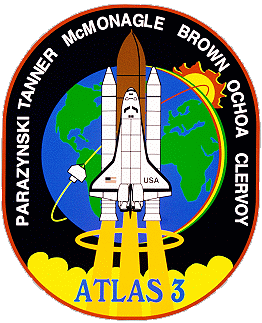 |
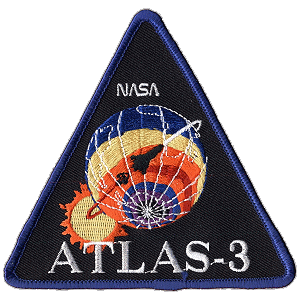 |
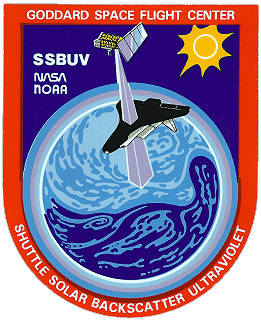 |
||
![]()
Launch, orbit and landing data
walkout photo |
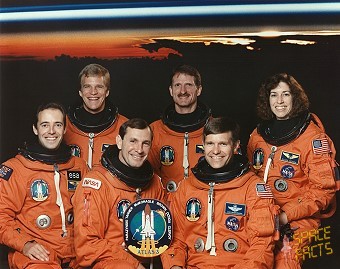 |
||||||||||||||||||||||||||||
alternative crew photo |
Crew
| No. | Surname | Given names | Position | Flight No. | Duration | Orbits | |
| 1 | McMonagle | Donald Ray | CDR | 3 | 10d 22h 34m 02s | 174 | |
| 2 | Brown | Curtis Lee, Jr. "Curt" | PLT | 2 | 10d 22h 34m 02s | 174 | |
| 3 | Ochoa | Ellen Lauri | MS-1, PLC, RMS | 2 | 10d 22h 34m 02s | 174 | |
| 4 | Tanner | Joseph Richard | MS-2, EV-2, FE | 1 | 10d 22h 34m 02s | 174 | |
| 5 | Clervoy | Jean-François | MS-3, RMS, IV-1 | 1 | 10d 22h 34m 02s | 174 | |
| 6 | Parazynski | Scott Edward | MS-4, EV-1 | 1 | 10d 22h 34m 02s | 174 |
Crew seating arrangement
|
 |
|
||||||||||||||||||||||||||||
Hardware
| Orbiter : | OV-104 (13.) |
| SSME (1 / 2 / 3): | 2030 (10.) / 2034 (5.) / 2017 (11.) |
| SRB: | BI-069 / RSRM 38 |
| ET: | ET-67 (LWT-60) |
| OMS Pod: | Left Pod 03 (17.) / Right Pod 04 (13.) |
| FWD RCS Pod: | FRC 4 (13.) |
| RMS: | 202 (1.) |
| EMU: | EMU No. 2031 (PLSS No. 1006) / EMU No. 2014 (PLSS No. 1008) |
Flight
|
Launch from Cape Canaveral (KSC) and
landing on the Edwards
AFB, Runway 22.
Due to bad weather at the emergency landing places in Portugal, Spain and Morocco were not available at first. While the countdown at Ben Guerir (Morocco) the winds became within the limits. STS-66 carried out the mission "ATLAS-3". It continued the series of Spacelab flights to study the energy of the sun and how it affects the Earth's climate and environment. ATLAS means Atmospheric Laboratory for Applications and Sciences. The ATLAS-03 mission made the first detailed measurements from the Shuttle of the Northern Hemisphere's middle atmosphere in late fall. The timing of the flight, when the Antarctic ozone hole is diminishing, allowed scientists to study possible effects of the ozone hole on mid-latitudes, the way Antarctic air recovers, and how the northern atmosphere changes as the winter season approaches. ATLAS-3 instruments, mounted on a Spacelab pallet in the cargo bay, included Atmospheric Trace Molecule Spectroscopy (ATMOS), which collected more data on trace gases in the atmosphere than on all three of its previous flights combined; Shuttle Solar Backscatter Ultraviolet Spectrometer (SSBUV), which took ozone measurements to calibrate ozone monitor on aging NOAA-9 satellite as well as cooperative measurements with other ATLAS-3 instruments; Active Cavity Radiometer Irradiance Monitor (ACRIM), which took extremely precise measurements of the sun's total radiation for 30 orbits as calibration reference for sister instrument on Upper Atmosphere Research Satellite (UARS) launched in 1991; Measurement of the Solar Constant (SOLCON), provided by Belgium, which also measured solar radiation but as reference point to track changes over years; Solar Spectrum Measurement (SOLSPEC), French instrument, measured sun's radiation as function of wavelength; and Solar Ultraviolet Spectral Irradiance Monitor (SUSIM), which collected its highest precision solar ultraviolet radiation measurements in its 15-year lifetime. Millimeter Wave Atmospheric Sounder (MAS), collected nine hours of observations, measuring distribution of water vapor, chlorine monoxide and ozone at altitudes between 12 and 60 miles (20 to 100 kilometers (62 mi)), before computer malfunction halted instrument operations. The Atmospheric Trace Molecule Spectroscopy (ATMOS) experiment measured the concentrations of more than 30 gases in the middle atmosphere. These measurements were compared with those from previous ATLAS flights to identify and characterize changes in the atmosphere's chemical composition. As the Shuttle's orbit carries the spacecraft in and out of Earth's shadow (orbital night), the ATMOS instrument views the Sun as it rises or sets through the atmosphere. The spectrometer measures changes in the infrared component of sunlight as the Sun's rays pass through this segment of atmosphere, called the Earth's limb. Because trace gases absorb at very specific infrared wavelengths, the science team can determine what gases are present, in what concentrations, and at what altitudes by identifying the wavelengths that are "missing" from their data. During the ATLAS 3 mission, the ATMOS instrument had a video camera to record pictures of the Sun during the sunrises and sunsets, confirming the instrument's pointing. The ATMOS recorder also will had an improved controller, designed to give ground scientists more information about the recorder's status and condition. The Millimeter-Wave Atmospheric Sounder (MAS) measured the distribution of water vapor, chlorine monoxide and ozone at altitudes between 12 and 60 miles (20 to 100 km). MAS measured the strength of millimeter waves, or waves of frequencies between 30 and 300 Gigahertz, radiating at the specific frequencies of water vapor, chlorine monoxide and ozone. With a new chlorine monoxide receiver that is twice as sensitive as the one that flew on the ATLAS 1 and 2 missions, MAS attempted to better measure chlorine monoxide and ozone over the upper latitudes of both hemispheres. Also, investigators plan to examine the evolution and/or breakup of the Antarctic vortex, the mixing of polar and mid-latitude air and other atmospheric changes occurring in the Southern Hemisphere. Shuttle Solar Backscatter Ultraviolet Spectrometer (SSBUV) provided accurate, reliable readings of global ozone to verify the reliability of ozone information gathered by satellite instruments which are in orbit for extended periods of time. Scientists compare SSBUV data with observations from National Oceanic and Atmospheric Administration's NOAA-9 and NOAA-11 and NASA's Ultraviolet Atmospheric Satellite. The same atmospheric location is mapped by the UARS, SSBUV, Total Ozone Mapping Spectrometer (TOMS) aboard the Russian Meteor-3 Satellite and NOAA instruments within 60 minutes up to 17 times a day. SSBUV measured solar radiation in 12 ultraviolet wavelengths that scatter back from the atmosphere. Variations in the 12 wavelengths of backscattered radiation indicate how the ozone is distributed by altitude. Ozone absorbs shorter wavelengths of ultraviolet radiation more strongly than it does longer ones. Shorter wavelengths of ultraviolet radiation are backscattered from higher altitudes, while longer wavelengths move deeper into the atmosphere and are scattered from lower levels. The primary objective of Active Cavity Radiometer Irradiance Monitor (ACRIM) was to determine the degree and direction of possible variations in the Sun's total output of energy, or irradiance ACRIM measured the total solar irradiance from ultraviolet through infrared wavelengths to better than 0.1 percent precision. ACRIM, located on the ATLAS 3 platform, contained four cylindrical bays. Three of the bays housed independent heat sensors, called pyrheliometers, which were self-calibrating and automatically controlled. The fourth bay held a sensor that measured the relative angle between the instrument and the Sun. Measurement of the Solar Constant (SOLCON) measured the absolute value of the total solar irradiance and detects and measures long-term variations that may exist in its absolute value. The accuracy of the instrument allowed the science team to determine the value of the solar constant during a particular mission to within 0.1 percent accuracy and about 0.01 percent precision. Scientists theorize that systematic changes of only 0.5 percent per century in total solar energy reaching the Earth could explain the entire range of past climate changes from tropical to ice age conditions. The ATLAS solar instruments were designed to measure the changes in irradiance to a long-term accuracy of 0.1 percent. Continuous, more accurate measurements of the solar constant will allow future generations to identify solar and climatic trends over the centuries. SOLCON flew on Spacelab 1 with STS-9 (1983), ATLAS 1 (STS-45) and ATLAS 2 (STS-56). A copy, called SOVA 1, also flew on the European Space Agency's European Retrievable Carrier (EURECA), launched from the Shuttle STS-46 in July 1992 and retrieved in June 1993 on STS-57. Preliminary results from ATLAS 1 indicate the number of solar spots on the rotating solar disc influences the fluctuation of the solar irradiance value. SOLCON was a high-resolution, self-calibrating radiometer with a digital processing/converter unit. The only part of the experiment that was not automatic was the pointing operation, which required that the investigators analyze values obtained from a Sun sensor and, if necessary, request minor changes in the orbiter's attitude that will correctly position the experiment to point directly at the Sun. The objectives of Solar Spectrum Measurement from 180 to 3,200 Nanometers (SOLSPEC) were to measure the absolute spectral solar irradiance with the highest accuracy possible and to measure the solar variability at different times during a solar cycle. SOLSPEC, located on the ATLAS 3 pallet, had an onboard calibration device and three double spectrometers that recorded solar radiation. Once in orbit, the SOLSPEC equipment was closely monitored by scientists at the Spacelab Mission Operations Control center in Huntsville, Ala., during the first calibration. Later calibrations and observations were controlled through the onboard equipment computer. Some commands were sent from the remote center in Brussels. Solar Ultraviolet Spectral Irradiance Monitor (SUSIM) had two purposes. First, it measured the fluctuation of the Sun's ultraviolet radiation. During an 11-year solar cycle, changes in ultraviolet radiation bring about changes in atmospheric conditions, such as the amount of ozone in the stratosphere. A better record of the Sun's ultraviolet output will help scientists distinguish between atmospheric changes caused by variations in ultraviolet radiation and those brought about by human activity. Second, SUSIM determined how much the ultraviolet light being measured degrades the accuracy of the measuring instrument. Unless the extent of degradation is known, it is impossible to distinguish real changes in solar radiation from the loss of accuracy in the instrument. The crew of the Atlantis deployed the CRISTA-SPAS platform and retrieved it after a free flight of more than eight days. It was mounted on the Shuttle Pallet Satellite, the payload was designed to explore the variability of the atmosphere and provide measurements that will complement those obtained by the Upper Atmosphere Research Satellite launched aboard Discovery in 1991. CRISTA (Cryogenic Infrared Spectrometer Telescope for Atmosphere) instrument gathered first global information about medium and small-scale disturbances in trace gases in middle atmosphere, which could lead to better models of the atmosphere and Earth's energy balance. CRISTA-SPAS was a joint U.S./German experiment. The ASTRO-SPAS carried the Cryogenic Infrared Spectrometers and Telescopes for the Atmosphere (CRISTA) and the Middle Atmosphere High Resolution Spectrograph Investigation (MAHRSI). CRISTA observed a variety of gases in the middle atmosphere and MAHRSI measured amounts of nitric oxide and hydroxyl in the middle atmosphere and lower thermosphere. Also onboard the satellite was the small Surface Effects Sample Monitor (SESAM), a materials-science experiment aimed at measuring decay of surfaces exposed to the near-Earth space environment. CRISTA-SPAS was carried to space in the cargo bay of the Shuttle Atlantis. Early in the mission, Jean-François Clervoy positioned the satellite using the Remote Manipulator System. After release, the CRISTA-SPAS flew from 25 to 44 miles (40 to 70 km) behind the Space Shuttle. The satellite operated independently, except for required communication periods with the Orbiter. The ASTRO-SPAS carrier was designed for up to 14 days of autonomous operation in the vicinity of the Space Shuttle orbiter. It was approximately 15 feet (4.6 meters) in height, 7 feet (2 meters) in length and weighed approximately 7,500 pounds (3,400 kilograms). Precise attitude control was achieved by a 3-axis stabilized cold gas system in combination with a star tracker and two specially developed Global Positioning Satellite (GPS) receivers. Power was generated by a battery package which can supply 20 to 50 kilowatt hours to the science instruments depending on mission requirements. The spacecraft also carried a central onboard computer for satellite operation and attitude control which also executed commands and an S-band transponder for communications with the ground which was relayed through the Space Shuttle orbiter. For the retrieval of CRISTA-SPAS, Atlantis used a new rendezvous approach to the satellite than has been standard for past satellite retrievals. Rather than approaching for the final approximately 1.5 miles to CRISTA-SPAS from a point directly ahead of the satellite, Atlantis approached from beneath the satellite. An approach from directly in front of the satellite is called a V-Bar approach, or approaching directly along the velocity vector of the satellite. The V-Bar approach is the standard technique that has been used on all past shuttle rendezvous. Atlantis used a different approach, flying the final mile to CRISTA-SPAS along the R-Bar, an imaginary line drawn from the satellite to the center of the Earth. The R-Bar approach was being evaluated for use in rendezvous with the Russian Mir Space Station in 1995 due to the propellant savings that it may achieve. Approaching the Mir, the shuttle will have to fire its braking jets in a mode called low Z, where jets facing toward Mir do not fire and risk damaging the station. Instead, braking of the shuttle's approach is performed by firing jets offset from facing directly at the station. The low Z approach requires more propellant when used during a V-Bar rendezvous approach than during an R-Bar approach. To fully evaluate the planned Mir rendezvous, Atlantis will use low Z braking as it performs the R-Bar CRISTA-SPAS rendezvous. The new approach may not only conserve propellant when approaching the Mir station but also could mean less braking thruster firings are required during the rendezvous in general, reducing any risk of damaging Mir. ESCAPE II (Experiment of the Sun for Complementing the Atlas Payload and for Education), a studentdesigned and -developed payload, gathered data that will contribute to a better understanding of the Sun's radiative effects on the Earth's upper atmosphere. Instruments on ESCAPE II included a spectrometer and a digital imaging telescope, which gathered data in extreme ultraviolet wavelengths in which little research has been done over the last 20 years. ESCAPE II obtained digital images of the solar disk in Lyman alpha, a wavelength (121.6 n.m.) in the extreme ultraviolet. The students of ESCAPE II project were hoping the images will provide a correlation between solar activity and solar radiation reaching the Earth's atmosphere. The NIH-R-1 payload was a collaborative developmental biology experiment developed by NASA and the National Institutes of Health (NIH). The 11 experiments that comprise NIH-R-1 studied the effects of space flight on developing rats. These experiments provided important insights into the fields of gravitational and space biology and gravity's effects on living organisms. The NIH-C-2 payload was comprised of two collaborative biomedical experiments sponsored by NASA and the National Institutes of Health (NIH). These two experiments made use of a computerized tissue culture incubator known as the Space Tissue Loss (STL) Culture Module. STL was developed at the Walter Reed Army Medical Center in Washington, D.C., to study cells in microgravity. Both experiments studied the effects of space flight on cells from chicken embryos. Protein Crystal Growth Experiments: The STS-66 mission carried two related systems - the Crystal Observation System, housed in a Thermal Enclosure System (COS/TES), and the Vapor Diffusion Apparatus, housed in a Single-locker Thermal Enclosure System (VDA/STES) - to continue research into the structure of proteins and other macromolecules such as viruses. In addition to using the microgravity of space to grow high-quality protein crystals for structural analysis, the experiments help develop technologies and methods to improve the protein crystallization process on Earth as well as in space. Some of the proteins grown on STS-66 were: serum albumin, malic enzyme, aldehyde reductase and thrombin inhibitor complex. The Space Acceleration Measurement System (SAMS) was flown for the eleventh time aboard the Space Shuttle. The middeck payloads that SAMS was supporting were the Protein Crystal Growth (PCG) experiments. SAMS collected and recorded data characterizing the microgravity environment in the Shuttle's middeck. SAMS provided the scientists studying these crystals with the information of the microgravity environment that these crystals experienced during the mission. The scientists were able to account for the rocket thruster firings, crew activity and background vibrations that influence these delicate experiments. The Heat Pipe Performance-2 (HPP-2) Experiment investigated the thermal performance and fluid dynamics of heat pipes operating with asymmetric and multiple heating zones under microgravity conditions. A Thermal Performance Apparatus (TPA) mounted to middeck seat studs allowed the Orbiter crew members to test individual heat pipes in the crew compartment during the flight. Thirty-five tests were performed with ten different axially grooved aluminum/Freon heat pipes. The original Heat Pipe Performance Flight Experiment (HPP-1) was flown on STS-52 in October, 1992, to investigate and document the microgravity behavior and performance of several different types of heat pipes. Data from HPP-1 was used to modify and validate a NASA heat pipe computer model known as the Groove Analysis Program (GAP). The current version of GAP models heat pipes with single and uniform heating and cooling zones. The HPP-2 experiment tested heat pipes with asymmetric and multiple heating zones, providing data for correlation with new modifications to the GAP model. The basic difference between the two experiments was that HPP-1 tested 'ideal case', or simple heat pipes, while HPP-2 tested more realistic heat pipe designs that mirror the complexity of actual spacecraft applications. Due to high winds and rain showers at Cape Canaveral STS-66 was diverted to the Edwards AFB. |
Photos / Graphics
 |
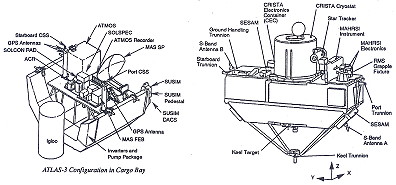 |
 |
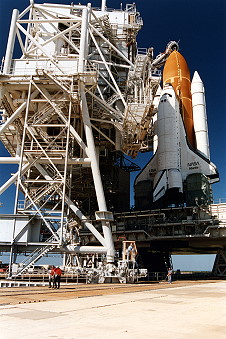 |
 |
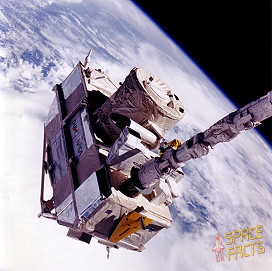 |
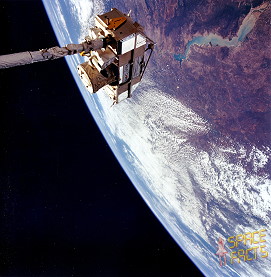 |
 |
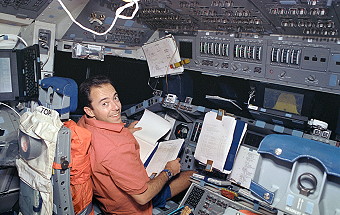 |
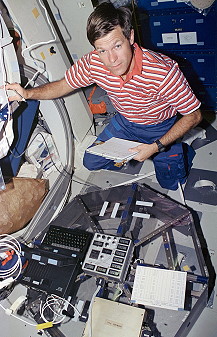 |
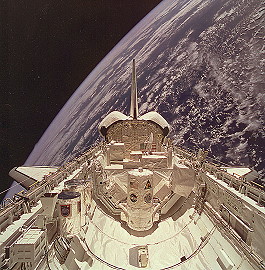 |
 |
 |
 |
 |
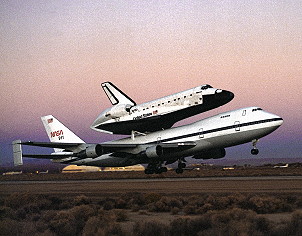 |
more Earth observation photos |
|
| © |  |
Last update on March 27, 2020.  |
 |